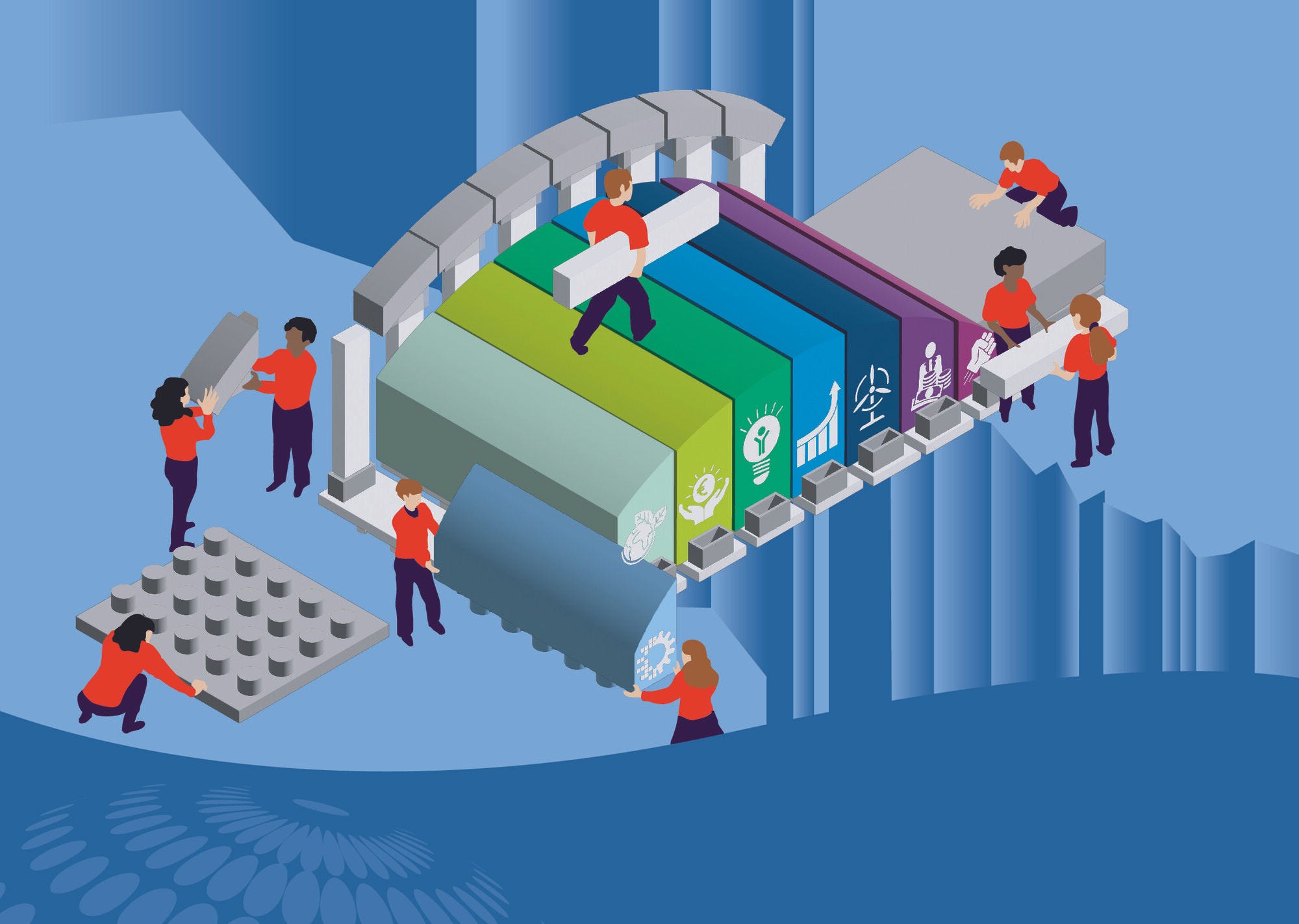Paraguay has achieved strong and resilient growth and made progress across a range of development outcomes since it emerged from a prolonged period of economic and political instability in the early 2000s. In 2014, the country adopted its first National Development Plan, setting course towards an ambitious vision of the country’s future. To maintain the pace of economic growth and achieve more inclusive development Paraguay will need to overcome a number of institutional, economic and social constraints that challenge its development model. This first volume of the Multi-dimensional Review of Paraguay analyses the country’s development performance and presents the main constraints to the country’s development. It examines five broad areas, corresponding to the key areas of the Sustainable Development Goals: prosperity, people’s well-being, planet, peace and institutions, and partnerships and financing.
Multi-dimensional Review of Paraguay

Abstract
Executive Summary
Paraguay has performed well over a range of development outcomes since 2003, after emerging from a prolonged period of economic and political instability. The economy has grown at 4.6% per annum in real terms, the poverty rate has fallen from 58% to 27%, and employment creation has progressed at 2.8% per annum, more rapidly than the growth of the working age population. The country’s development has benefited from a favourable external environment, with large increases in the prices of major agricultural export products and from a large demographic dividend. Structural reforms undertaken since the democratic transition in 1989 and intensified in the recent period have enabled the country to take advantage of the tailwinds of the 2000s. Maintaining the pace of development and increasing its inclusiveness will require Paraguay to face a number of institutional, economic and social constraints that challenge its development model.
In 2014, Paraguay adopted its first National Development Plan (PND). Elaborated through a wide national consultation process, the PND is an ambitious agenda for mid-term development with a 2030 horizon along three strategic axes: i) poverty reduction and social development, ii) inclusive economic growth, and iii) inserting Paraguay into the world.
This report is the first volume of the Multi-dimensional Country Review (MDCR) of Paraguay. The MDCR is undertaken to support Paraguay in developing and implementing a strategy to achieve its development outcomes. This volume describes the driving forces of development in the country, benchmarks development outcomes and identifies the main constraints on sustainable progress in growth and citizen well-being.
Main findings
Economic growth is among the strongest in Latin America but is also very volatile, mainly because of the importance of agriculture in the economy and the concentration of exports in primary agricultural products and their derivatives. Despite this volatility, an inflation-targeting regime has managed to bring inflation volatility down, and the fiscal framework is sound, with low levels of debt and one of the lowest public deficits in the Latin America region. Productivity has grown steadily in the past decade, despite investment levels remaining below those of the region and the OECD by about 4% of GDP in the past decade. Structural transformation is progressing, with employment in agriculture falling by 10 percentage points over the past ten years. However, as employment shifts in part to low productivity activities in the service sector, labour reallocation contributes less to growth than it would otherwise.
Living standards have improved, but inequality remains a major challenge. Economic growth and macroeconomic stabilisation have contributed to raising the living standards of Paraguayans and to lowering the poverty rate from 45% in 2007 to 27% in 2015. Solid job creation has contributed to improving incomes. The expansion of free health care provision has contributed to improved accessibility of service. Income inequality is among the highest in the benchmark group and there are marked inequalities in non-monetary dimensions, including access to social insurance or water and sanitation, especially between urban and rural areas. Vulnerability is also a factor of inequality: perceived insecurity is relatively high in the country, and homicides are concentrated in a few departments, in particular in border areas.
The current economic expansion has put increasing pressure on the rich environmental endowment of the country. Paraguay has one of the cleanest energy mixes in the region, which has allowed it to maintain low carbon intensity and manage air pollution, and is endowed with diverse ecosystems and abundant resources for primary production. However, deforestation is one of the most critical environmental issues in the country, driven by increased land use for agriculture and livestock development.
Governance institutions are still undergoing fundamental transformations and further institutional strengthening is necessary to increase trust and ensure the rule of law. The Paraguayan democracy is still in a consolidation phase. Trust in major institutions is lower than in benchmark countries, especially in the case of the judiciary. Citizens’ support for and satisfaction with democracy, as expressed in surveys, are also low compared to other Latin American countries. They have increased in the past decade however, showing resilience in the face of episodes of political instability. High levels of perceived corruption hinder trust in public institutions, constrain business opportunities, and erode social capital. A comprehensive integrity system is being developed, with focus on transparency, but ensuring its effectiveness remains a big challenge.
Financing flows for development are low in Paraguay compared to both the benchmarking countries and the OECD despite recent improvements in both public and private flows. Given the country’s prudent fiscal stance and low reliance on public debt, public finance for development comes mostly from fiscal space. Government expenditure is relatively low, at 25% of GDP compared to 34% in Latin America and 45% in OECD countries. This is the consequence of low tax revenues and high non-discretionary expenditure, representing almost half of total public expenditure. At 5.5% of GDP, private flows are also relatively low. Foreign direct investment (FDI) flows have increased, but, at 1.16% of GDP, remain small.
Main constraints to development in Paraguay
The Paraguayan government faces two major challenges in achieving the country’s vision for the future given its development model: to steer the economy to deliver sustainable growth in the medium term and to improve the country’s capacity to stem inequality. An agriculture-based development model makes these tasks particularly difficult. Mechanised agriculture generates few jobs and concentrated incomes. Low diversification explains in part the high level of informality in the country. Informality in turn fuels inequality and weakens the capacity of the state both to alter the distribution of income and to steer the structural transformation of the economy.
To deliver sustainable growth in the medium term, the country has to overcome the obstacles to increasing investment and unblock avenues for increasing competitiveness. The country’s limited fiscal space constrains public investment and there is also unexploited potential to increase private investment flows, given the solidity and profitability of the banking sector. Investment in infrastructure is particularly necessary given the country’s geography, and could open up profitable opportunities. Two critical factors to unlock competitiveness are to improve educational outcomes and to improve state capacity in a number of areas including land management and administration, integrity, regulatory quality, and environmental protection.
The country also has to overcome obstacles to improving the inclusiveness of its development path. Diversification and improvements to educational outcomes are necessary to improve the distribution of market incomes. However, the capacity of the state to affect inequality in living standards is constrained by its limited capacity to deliver quality public services to all, in particular across territories, and the low impact of the fiscal taxation and transfer system on poverty and inequality. The prevalence of informality and the fragmented nature of the social protection system hinder the efficiency of state action towards inequality in living standards.
In the same series
Related publications
-
 10 September 2022
10 September 2022










